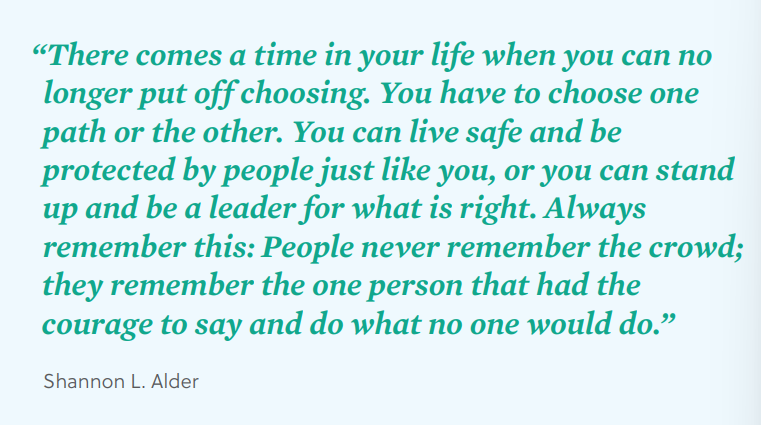Racism and our active involvement has been a battle to fight for in the education system. Critical Race Theory has been shunned in an attempt to cancel the conversation through the color-blind protocol. The adage “I do not see color” is often used to support the colorblind procedure. This well-intentioned statement in most cases is light-hearted but it is a very narrow perception. The pressure of time and the slow but gradual attempt to have slavery and its history fade away is due to Euro-centrism or the belief the world revolves around Europeans. This is a vile attempt to shake off the guilt from the hands of Europeans and subsequently continues as passive racism in the U.S. It is regrettable to observe the shift in ideals brought on by Eurocentrism.

Embracing anti-racism global goals in the classroom is more than ever a necessity to nurture conscious U.S. citizens. This will teach my students to respect one another’s differences. Individuals must be able to relate to one another, and break down barriers across cultures. The history of Blacks throughout the education system has been very limited. Providing my classroom with exemplary role models of their skin color or ethnic origin will allow me to develop their REC (Racial-Ethnic-Cultural) identity. Showing students of color astounding examples of strong men and women of their complexion will allow for growth and an open space in the classroom setting.

Anti-Racism = Education + Self-Accountability + Allyship
Education–
Bringing critical-race theory into the forefront of my classroom takes on a challenge that is crucial for the very nature of the social structure of our society. Teaching students practical strategies for dealing with the pressures that might make or break the systemic racism that permeates our society will be a key component of my future classroom. The first step in initiating anti-racism in my classroom is to learn the roots of it in history. We must learn the facts of racism before we bring up our preconceived notions that can do more harm than good.
“Before you assume, learn the facts.
Before you judge, understand why.
Before you hurt someone, feel.
Before you speak, think.”
-Unknown
Learning about racism’s roots in history is only the beginning and will take some time to hammer the message home. During this learning moment it can be used to reflect.
Reflection
What features or similarities unite us as people? What differences in people do you find unique and beautiful?
“The starting point is keen awareness of our own
cultural roots, biases, beliefs, and worldviews, and
our tendencies to project these views on others.
When we know who we are, then we can see others
more clearly as human beings like ourselves
and can appreciate the differences.”
The Helping Relationship,
Lawrence M. Brammer and Ginger Macdonald
Self-Accountability–
Conversations about racism are difficult but necessary. While you learn about racism, it’s equally important to pay attention to your feelings and ideas. Instead of giving in to your anxiety and lack of control, you must focus on what you are learning and modify your thinking. We all have the power to make our own decisions and are empowered. I will focus on understanding and detecting prejudice, systemic racism, and self-accountability to start the empowering process in my students.
Prejudice is strongly influenced by our surroundings, and we may harbor prejudice without even being aware of it. We may develop views or hold beliefs about certain people or groups of people without ever conversing with them. For instance, the common nomenclature for East Asians is the all-encompassing word “Asian” itself. When someone is told that someone from India or Russia is Asian they would be perplexed because the American mainstream is trying to hyper-focus our attention to our rivals like China or Japan. It is quite baffling when someone calls Europe a continent because of the Euro-centristic view that Whites are somehow “different” from the “others.” The truth is that Europe would be considered part of Asia had Euro-centrism not been an instigating force to socialize what is “normal” or “superior.” Biases are unacknowledged or unforeseen consequences of systemic racism that we must hold ourselves accountable for to push back on racism and activate anti-racism.

Allyship & Action–

To support People of color, everyone of us must discover our own particular routes. Having my students look into a living, active opponent of racial injustice in America will start their own inspiration for their personal path. Seeking a person who is actively involved in your community, has contested prejudice, and is adopting an anti-racist path would benefit the social awareness of allyship and the subject at hand. Finding inspiration and lessons from their cause, actions, and steps is the goal of this activity. Introducing this into my future classroom will serve justice to the knowledge that every student should have at hand to interact and socialize well in the massive world they live in.
I appreciate you for reading my blog post and thank you for stopping by!
Make sure to follow @AdnanAk71158141 on Twitter!